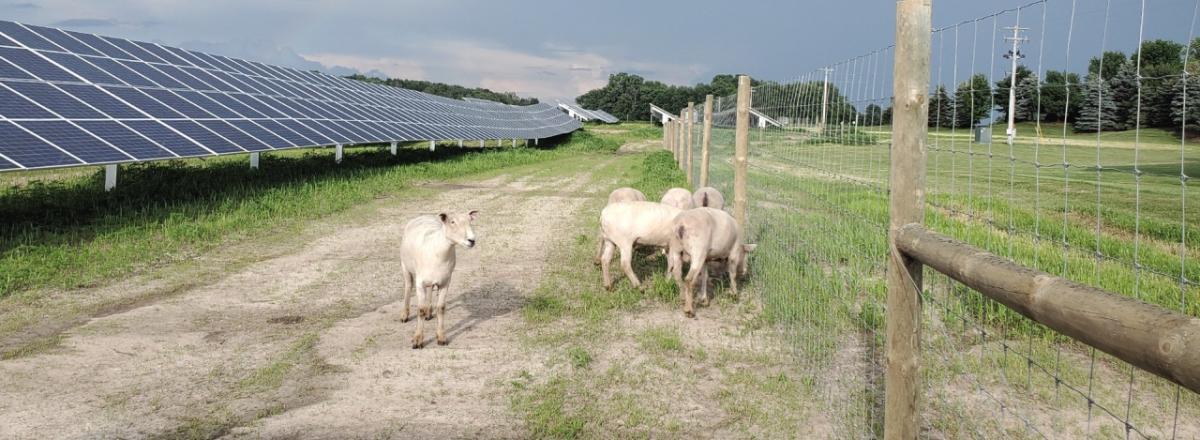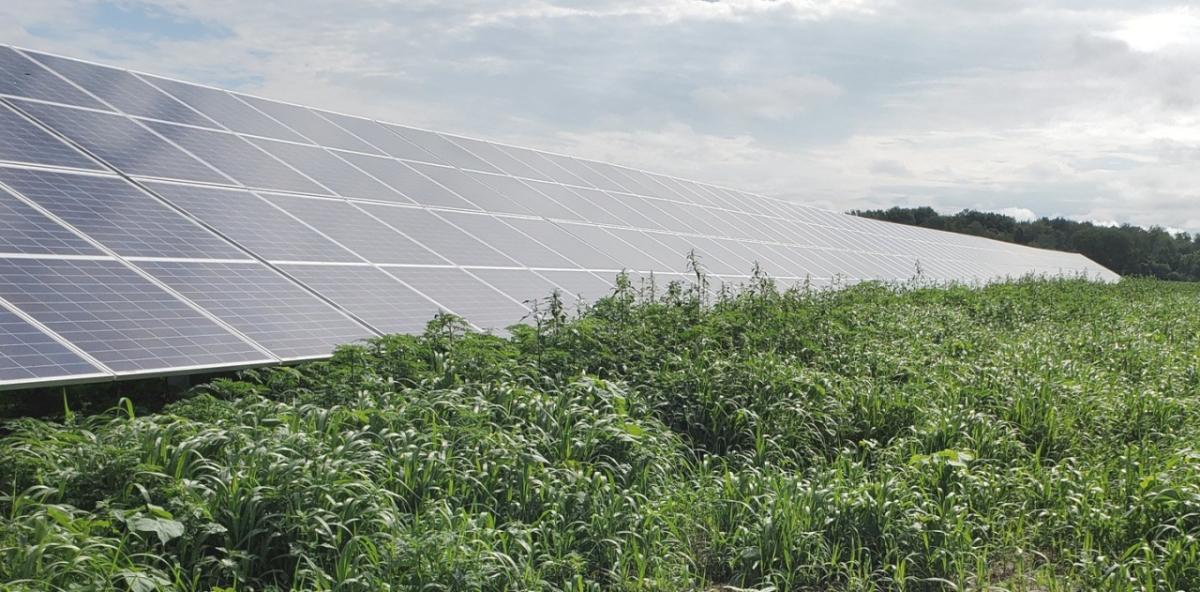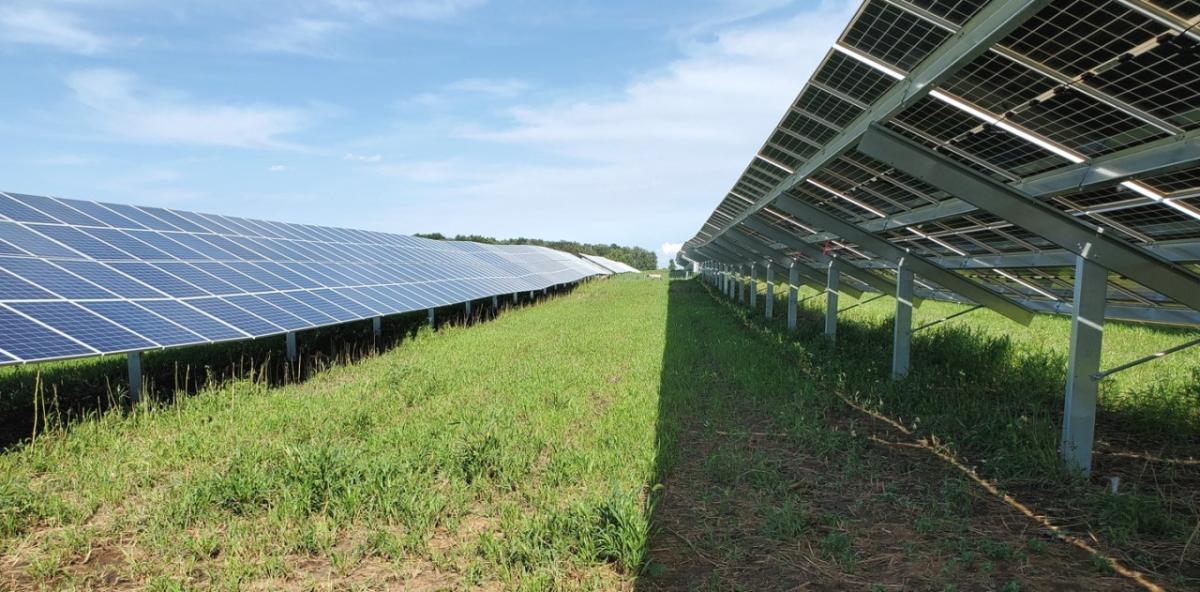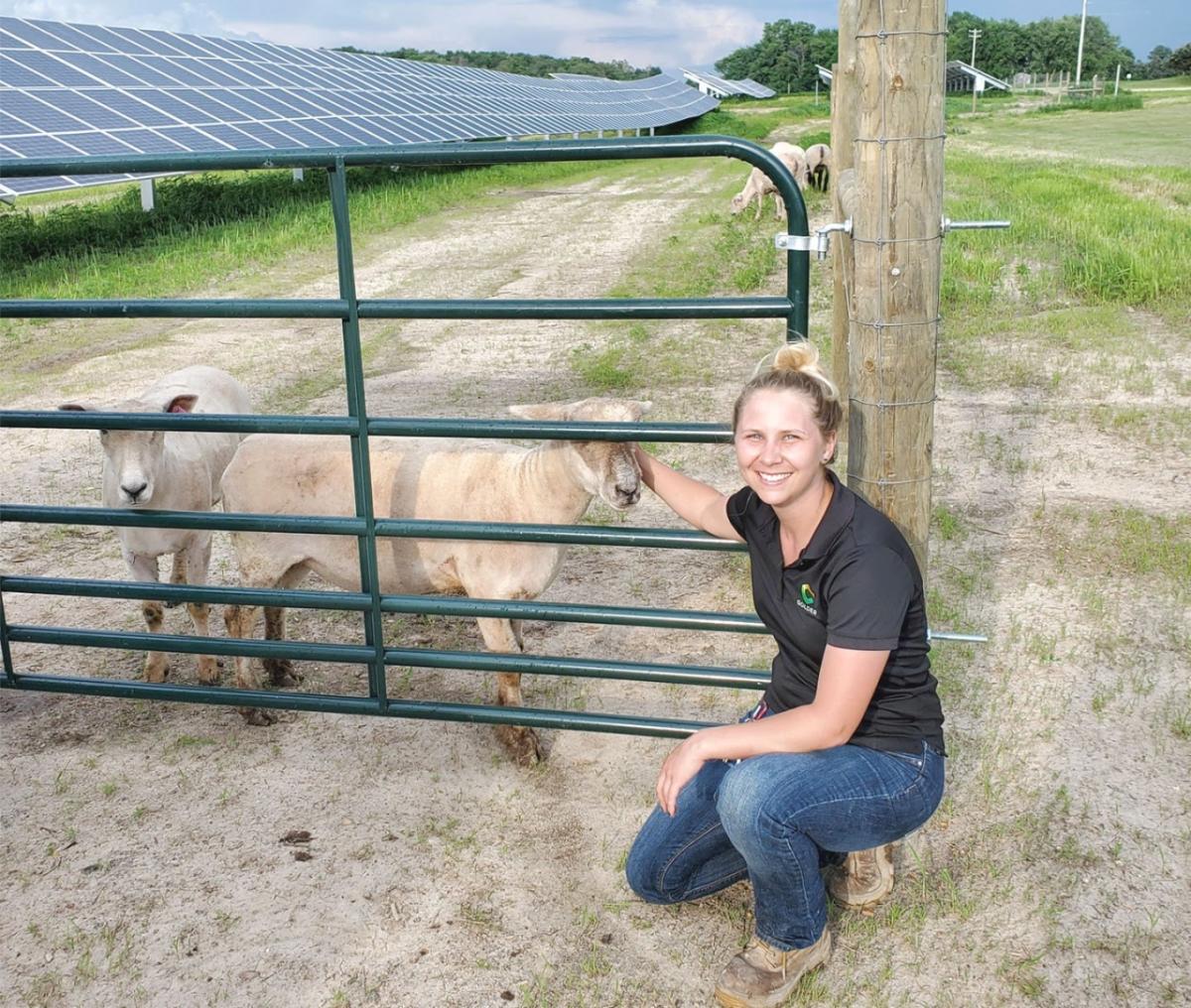Pollinators & Productive Sheep: A More Sustainable Solar Development Method
Implementation of co-beneficial land-use practices around solar power arrays improves upon sustainable energy development in a practice known as ‘agrivoltaics’.
Growing solar initiatives have opened a door to incorporate better land use practices. With pollinator populations declining globally, solar arrays present a potential win-win opportunity. An effort is under way to turn one sustainable resource initiative into a solution for restoring another essential resource.
Since 2002, biodiversity has decreased globally. Decline in pollinator populations is due to many factors, but one of the most notable reasons is a loss of floral abundance and diversity due to increased land use.
Steps have been taken to create goals to change the rate of declining biodiversity. Cool season “lawn” grasses used as ground cover around solar arrays may provide adequate soil stabilization but limit other benefits to native wildlife. Recognizing this, some solar developers are improving upon their sustainable energy facilities by incorporating sustainable land-use practices around their solar arrays, a practice known as agrivoltaics.
Solar power provider, ES Services Company (ESS), a subsidiary of CMS Energy, constructed a solar array this year in western Michigan and sought out an alternative to their land-use practices surrounding the solar arrays. Instead of mowing around the array during the growing months, ESS collaborated with Golder, a WSP company, to design and maintain a pollinator habitat. Pollinator habitat will double ESS’s sustainable impact by helping reduce declines in valuable pollinator populations and biodiversity.
Beyond providing nectar for adult pollinators, the native grass and flowering plants also provide necessary food for caterpillars, many of which rely upon native host plants to survive. For some pollinators, native plants also provide overwinter shelter for another generation to establish the following spring.
Knocking Back the Weeds
Construction of the solar array was completed in mid-summer. By that time, early successional weed species – those that colonize bare, disturbed soils – had become established. The establishment of these species not only made soil preparation and planting more difficult, but it also threatened to add more weedy species seeds to the seed bank. An increased presence in the seed bank gives the weeds a chance to outcompete native plants trying to germinate.
Knowing this, the Golder project team began to evaluate its options to knock back the weeds.
One tried and true method for routing weeds and managing native habitats are prescribed burns; however, with expensive solar panels onsite, prescribed burns were not an option.
Mowing the array periodically throughout the summer is a more controlled method of weed suppression. However, mowing between solar panel arrays is difficult, time-consuming, and thus expensive. In addition, ESS was interested in reducing fossil fuel dependence, not promoting it.
Herbicides could have worked, but the site is located on a certified organic farm, so that was not a viable option either.
Having ruled out many of the standard techniques, Golder looked for an innovative answer.
The use of small herd animals for vegetation control is far from a new practice, but it is experiencing a resurgence as people look for environmentally sound solutions for property management.
Many farmers offer “rent-a-goat” services, placing goats on a property for short-term vegetation control assignments. Goats can navigate steep slopes that would be hazardous for humans and lawnmowers. They have healthy appetites and will graze on a wide range of plants. Unfortunately, goats are also curious, nimble, and able to jump two meters high, making them impractical for solar arrays where there are wires that they may chew and panels they will certainly jump on.
In contrast, domestic sheep offer many of the same grazing benefits without the drawbacks often seen with goats.
As the domestic sheep option appeared more promising, one additional challenge emerged. The site is located on an organic poultry farm. Poultry are susceptible to many diseases passed between livestock, particularly poultry and swine. Therefore, the sheep used for this site had to pass the site’s biosecurity restrictions: they could not be sourced from a farm with swine or poultry.
The Golder team identified several sheep owners interested in grazing their sheep at the site, but they all owned chickens or pigs. After many phone calls and emails, Golder found two sheep producers who did not own either chicken or pigs.
In the end, twenty-two sheep were used for vegetation management on the solar power property from June until September. The sheep will return in the spring to dine on emerging weeds again before the planted native pollinator species germinate.
The sheep are expected to be an ongoing part of the vegetation management program for the approximate 20-year lifespan of the panels. Providing a variety of benefits to the site including weed management, ground aeration from their hooves, and fertilization.
Golder will continue to monitor and maintain the pollinator habitat’s establishment and sustainable management practices. Time will tell, but ESS and Golder appear to have developed a win-win when it comes to sustainable solar development, helping to reducing rates in declining pollinator populations and biodiversity.
[To subscribe to Insights, contact the editorial staff at insights@wsp.com.]





